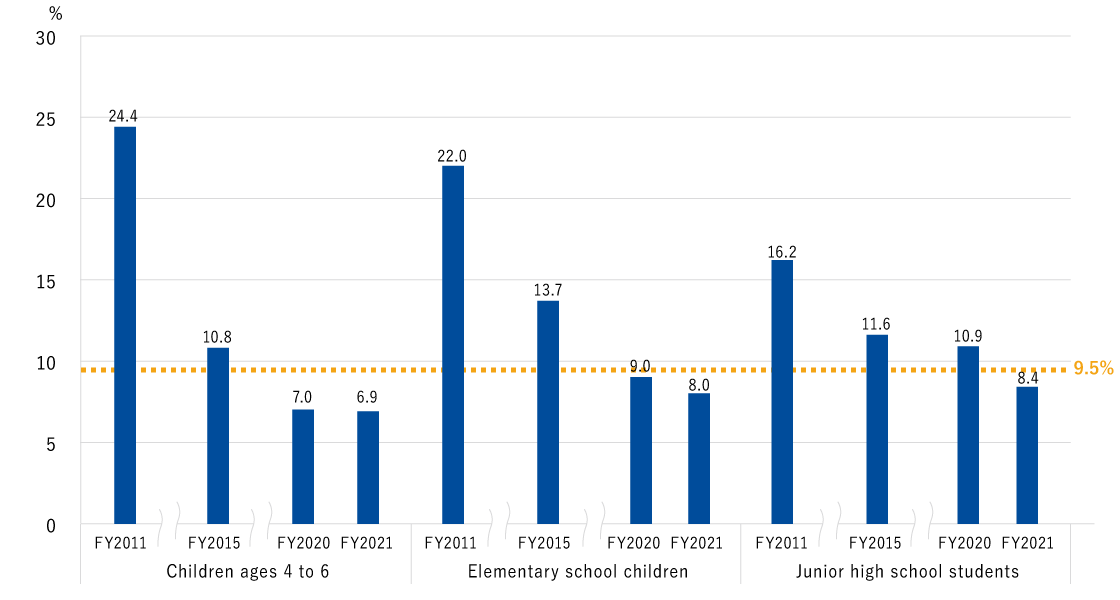Mental Health and Lifestyle Survey
Outline of the Mental Health and Lifestyle Survey
Purpose
Since the Great East Japan Earthquake and the accident at TEPCO’s Fukushima Daiichi NPS, many people in Fukushima Prefecture feel anxious and stressed by the experience and evacuation. The Mental Health and Lifestyle Survey was launched with the aim of comprehending the physical and mental health and lifestyle of the residents, so we can provide each of them with individualized medical care, health care, and welfare services.
Eligible Persons
- Those who were registered as residents in the covered area* from March 11, 2011 to April 1, 2012 (even after moving out of the area)
- Those who are registered as residents in the officially designated evacuation zone as of April 1 of each year of the CHC
- Other than those above, as necessary, based on Basic Survey results.
* Covered area: 13 municipalities designated by the national government as evacuation zones in 2011
Hirono Town, Naraha Town, Tomioka Town, Kawauchi Village, Okuma Town, Futaba Town, Namie Town, Katsurao Village, Iitate Village, Minamisoma City, Tamura City, Kawamata Town, and parts of Date City (specific spots recommended for evacuation)
Method and main items in the questionnaires for FY2024 Survey
Self-administered.
Questionnaire content varies depending on the age group, and in principle, for children up to junior high school age, the questionnaire is to be completed by parents/guardians living with them.
| Age group | Respondent | Main items |
|---|---|---|
| Ages 0-3 | Parents/guardians of the child covered by the survey | Health condition, height, weight, exercise habits, parent’s confidence in child rearing, concerns about children’s development and behavior, availability of consultation resources, Influence of COVID-19 to daily lives, free comments, etc. |
| Ages 4-6 | Parents/guardians of the child covered by the survey | Health condition, height, weight, exercise habits, SDQ, developmental and/or mental health problems, availability of consultation resources, Influence of COVID-19 to daily lives, free comments, etc. |
| Elementary school students | Parents/guardians of the child covered by the survey | Health condition, height, weight, exercise habits, SDQ, developmental and/or mental health problems, availability of consultation resources, Influence of COVID-19 to daily lives, free comments, etc. |
| Junior high school students | Parents/guardians of the child covered by the survey (partially children themselves) | Health condition, height, weight, exercise habits, SDQ, developmental and/or mental health problems, availability of consultation resources, Influence of COVID-19 to daily lives, free comments, etc. |
| Adults | Persons to whom the survey was addressed | Subjective health condition, height, weight, medical history (hypertension, diabetes, mental illness.), health check record, sleep habits, exercise habits, living conditions (current housing, employment status), smoking, alcohol consumption, K6 score, Influence of COVID-19 to daily lives, health effects of radiation, and availability of consultation resources, free comments, etc. |
Implementation Status
Provision of support to those in need
Summary
The role that the Mental Health and Lifestyle Survey has fulfilled
Significance of the Survey
- In FY2023, the proportion of children with high-risk scores (SDQ score of 16 or higher) who had certain emotional or behavioral problems was 9.7% among children aged 4 to 6, 10.7% among elementary school students, and 8.4% among junior high school students. Since FY2019, the proportion has improved to a level that is nearly the same as that of the previous study.
- In the FY2023 survey, the proportion of those with high-risk scores (K6 score of 13 points or higher) for mood disorder or anxiety disorder was 5.4% overall; however, the situation improved significantly, decreasing to about half the level in the first year in the three years following the disaster. Since then, the recovery has slowed, and in recent years, the values have remained higher than the national indicators.
- Regarding lifestyle habits such as exercise, smoking, and problematic drinking, a gradual improvement trend has been observed compared to the first year of the survey, but in recent years, the situation has remained almost unchanged.
Significance of support
- Based on the questionnaire survey results, we continue to provide various forms and styles of support. Specifically, for telephone support, we conducted approximately 2,000 calls in FY2023, bringing the total number of individuals who have received telephone support to over 40,000 to date.
- Regarding telephone support provided in FY2023, children most frequently sought counseling for “school-related matters,” “daily life and habits,” and “physical health”, while adults most commonly sought consultation regarding “physical health,” “sleep,” and “depression.”
- However, depending on the condition of the residents, it may be difficult to provide support only by telephone, and it may be necessary to seek the cooperation of external support organizations. In order for the support by telephone to function smoothly, it is essential to collaborate with municipalities and other related organizations on a regular basis; we have actually been building such a network.











